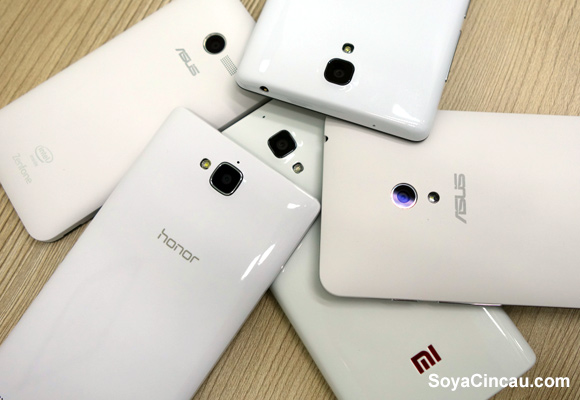According to a report by IDC, an industry analyst company, big-time smartphone vendors like Apple and Samsung are going to find it more difficult to compete in the premium smartphone segment this year due to the sea of Chinese and Taiwanese vendors with offerings of cheaper and just as capable smartphones.
According to Daniel Pang, Asean senior research manager of the client devices and mobility division of IDC Market Research (M) Sdn Bhd, while many Malaysians would still prefer owning a premium flagship smartphone, the economical pinch are causing many consumers to feel that they just aren’t getting enough out of their investment.’
IDC’s Asia Pacific Mobile Phone Tracker shows that Chinese and Taiwanese vendors held a whopping 46% market share of the Malaysian smartphone market in the first three quarters of 2014 as opposed to 19% in the entirety of 2013, and we believe that the percentage will continue to rise as the year progresses.
The main reason this is happening is that over the last two years Chinese and Taiwanese vendors have been steadily producing high specification smartphones at a fraction of the cost for similar phones being sold by bigger companies. An example of this would be the Huawei Honor 6 which are sold for RM 999 which is nearly half the price of similarly specced devices.
However, a price war of this scale on the budget tier of smartphones is unlikely as the profit margin in that segment is already very low. But this still puts large vendors like HTC, Sony and even Apple a bit of a twist as brands like Xiaomi and OnePlus continue to grow with their unique selling practices and clever marketing techniques. Maybe it’s time for the big boys to learn some tricks from the little guys?
Granted the Chinese brands are getting better in terms of hardware but they still aren’t on par with the big brands in terms of the software experience, either due to issues with their OS or unimaginative UI that’s more a hindrance than a help. For those who can spring the cash, they will still continue to support the mainstream brands mainly on part of general reliability, familiarity as well as more steady software updates.
Nothing the brands can’t fix if they decide to pump more resources into make their software better instead of just reskinning the latest version of Android.







